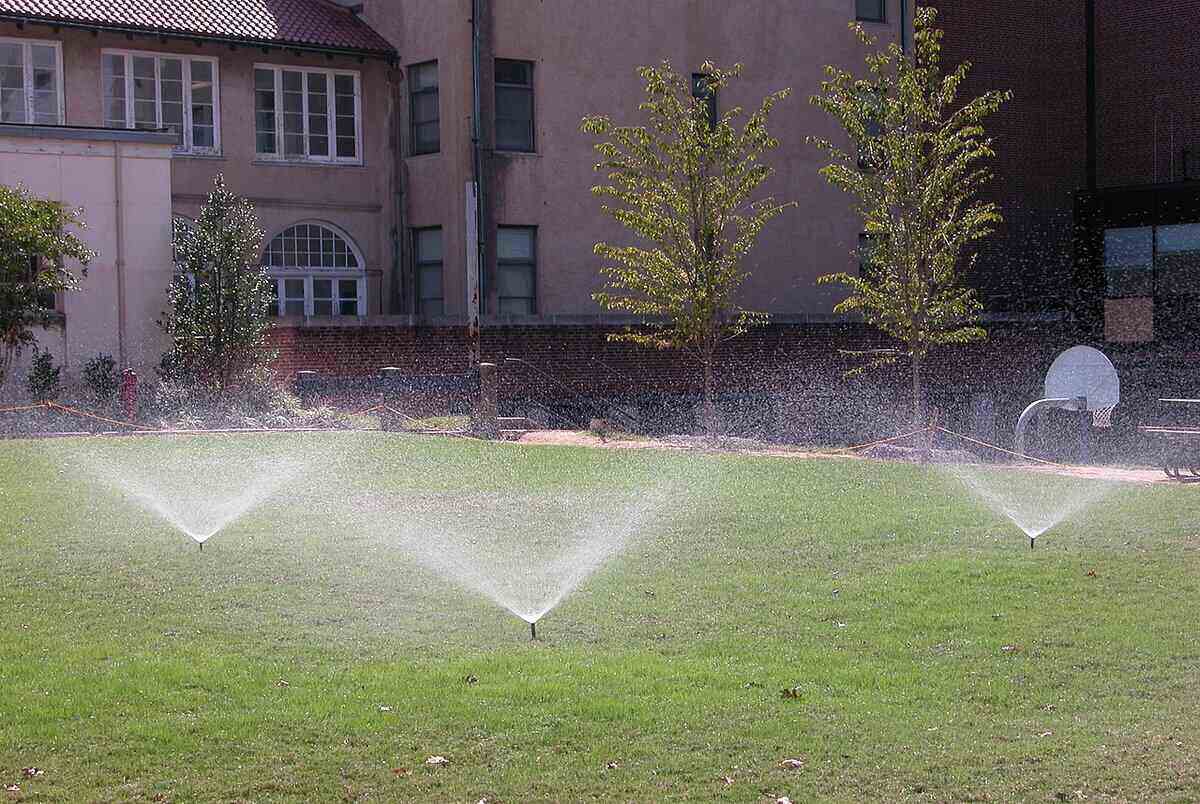Efficient sprinkler system for Lawn

A lush, green lawn is the dream of every homeowner, but it requires regular maintenance and care to keep it healthy and vibrant. One essential aspect of lawn care is watering, and an efficient sprinkler system can make all the difference. A well-designed and installed sprinkler system can help you conserve water while keeping your lawn well-nourished. In this blog, we'll walk you through the process of designing and installing an efficient sprinkler system for your lawn.
Step 1: Evaluate Your Lawn:
Before designing your sprinkler system, you need to evaluate your lawn's size, shape, and irrigation needs. Determine your lawn's square footage and divide it into zones based on sun exposure, soil type, and landscaping features. This information will help you choose the right type of sprinkler heads and nozzles for each zone and ensure that you're not wasting water on areas that don't need it.
Step 2: Choose Your Sprinkler Heads:
There are several types of sprinkler heads to choose from, including rotary, impact, and spray heads. Rotary heads are ideal for larger areas, while spray heads are best suited for smaller spaces. Impact heads are more durable and can handle heavy use, making them an excellent choice for commercial properties. Consider the water pressure and flow rate of your system when selecting sprinkler heads to ensure they're compatible.
Step 3: Determine Your Water Pressure and Flow Rate:
The water pressure and flow rate of your system will determine the number and type of sprinkler heads you can use. To determine your water pressure and flow rate, you'll need a pressure gauge and a flow meter. Attach the gauge to your outdoor faucet and turn it on to measure the water pressure. Use the flow meter to measure how many gallons per minute (GPM) are flowing from the faucet.
Step 4: Lay Out Your System:
Using your lawn evaluation and sprinkler head selection, draw a rough sketch of your system's layout. Indicate where each sprinkler head will go, making sure to space them out evenly to avoid overwatering or under-watering any areas. Be sure to include a backflow prevention device to prevent contaminated water from flowing back into your home's water supply.
Step 5: Install Your System:
Once you have your layout and equipment, it's time to install your system. Begin by trenching around the perimeter of your lawn and throughout each zone. Install the sprinkler heads and connect them to the mainline using PVC pipes and fittings. Install a timer to automate your system's watering schedule, and don't forget to test the system for leaks and proper coverage.
In conclusion, designing and installing an efficient sprinkler system requires careful planning and attention to detail. By evaluating your lawn's needs, choosing the right sprinkler heads, determining your water pressure and flow rate, and laying out and installing your system correctly, you can keep your lawn healthy and vibrant while conserving water and reducing your water bill.